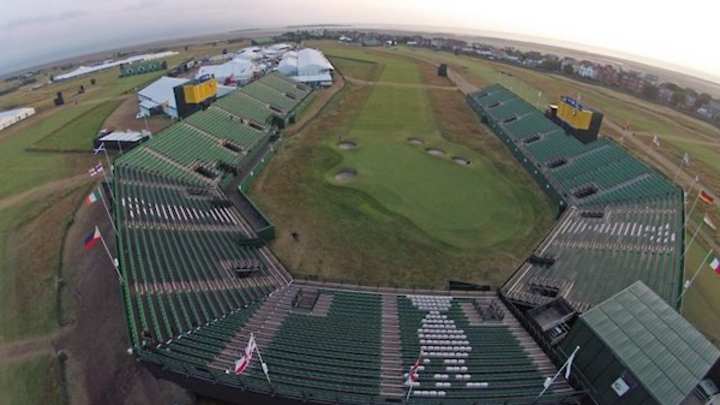New 2020 PGA Tour schedule creates more questions than answers as golf returns from coronavirus

Sports, like other businesses in the U.S., are looking for safe and responsible ways to get athletes back onto the playing fields.
In golf, the field typically consists of a 200-acre oasis of green grass and trees upon which social distancing can be accomplished easily compared with games played in confined stadia or parks.

The thought of sitting in the stands with spectators on either side, packed shoulder-to-shoulder to the rafters, is not a desirable experience for many sports fans while the coronavirus pandemic rages.
So, it’s not surprising that among the major American sports, golf will be the first to return to action. On Thursday, the PGA Tour released a revised schedule that will restart the season June 11 with the Charles Schwab Challenge at Colonial Country Club in Fort Worth, Texas.
But as with other sports, event logistics, even on a massive playing field the size of a golf course, will be challenging. The PGA Tour will spend the next two months trying to assemble the puzzle and return professional golf to the public.
“We will play only when we are certain that it is safe and responsible to do that,” Andy Pazder, the PGA Tour’s chief tournaments and competition officer, said on a conference call after the release of the schedule. “We are, needless to say, monitoring very closely developments at the local level, city, state and federal level, and given that we're a global organization with members all over the world, we'll also pay very close attention to what's happening outside the borders of the United States.”
With a virus that has infected 2.14 million and killed 143,000 worldwide – including about 660,000 infections and 32,000 deaths in the U.S. – the pandemic has produced more questions than answers.
The virus, also known as COVID-19, may or may not survive in warm, humid conditions, which prevail in most of the U.S. in the peak summer golf season. If coronavirus acts like influenza, then the pandemic should end as the weather warms.
Those who contract the virus and survive may or may not develop antibodies in their system that act like a vaccine. Health-care officials simply don’t know yet.
How long the virus lasts in the air or on surfaces also is unknown.
There are plenty of questions but few answers.
What remains unquestioned is that the PGA Tour has the best of intentions but will be able to do only so much to keep players, caddies, media, TV personnel, scorers and other tournament staff safe when play resumes in two months.
So how will the Tour go about it? Thursday’s conference call was short on details regarding tournament safety.
Site testing will be critical to ensure the safety of all involved. The federal government, with its vast resources, has failed to provide adequate testing, so why the Tour thinks it can be more successful is unclear.
Another issue with testing will be the optics of the PGA Tour having access to onsite screenings while some areas of the country struggle to provide the service for residents.
What will the Tour do if it determines a positive test onsite? Postpone or cancel the tournament? Would it matter whether the infected individual be a player, caddie, scorer or journalist? What procedures are in place for positive tests?
If the testing hurdle can be cleared, the next step would be successful mitigation, which begins with social distancing and hand washing but could extend to proper use of masks, too.
With the first four tournaments – Schwab, RBC Heritage, Travelers and Rocket Mortgage – excluding the general public, mitigation will be easier to oversee. Nonetheless, hundreds of people will be onsite and must be considered. How will the Tour do it? What procedures will be put in place, and for how long?
These questions are moot until the Tour starts playing golf again. Though June 11-14 is the slot outlined in the proposed schedule, putting a date to return on paper has its own issues.
The White House wants the nation to return to normal as soon as possible, which means getting society back to shopping at stores, eating at restaurants and attending sporting events. Or, if not attending, then fans' watching on their favorite device. Anything to get the virus out of the headlines and the economy back on track, which is a laudable goal, as long as it’s not premature.
It’s all about timing and execution. Too soon, and the medical experts say that another outbreak will be right around the corner. If testing remains inadequate, the end results could be just as dangerous as the first pandemic. But the most difficult part could be defiance.
If President Donald Trump proclaims that the country should be opened, but the governor of South Carolina or the mayor of Fort Worth, Columbus or Memphis or some other host city wants to limit gatherings, then the Tour would be stuck in the middle. It would be an especially dicey predicament for PGA Tour commissioner Jay Monahan, who recently joined LPGA counterpart Mike Whan in being named to the president’s advisory council that is tasked with reopening the economy.
Professional golf will start again, but the questions are stacking up much faster than the answers.
The Tour has two months to figure it out.
Sign up to receive the Morning Read newsletter, along with Where To Golf Next and The Equipment Insider.
